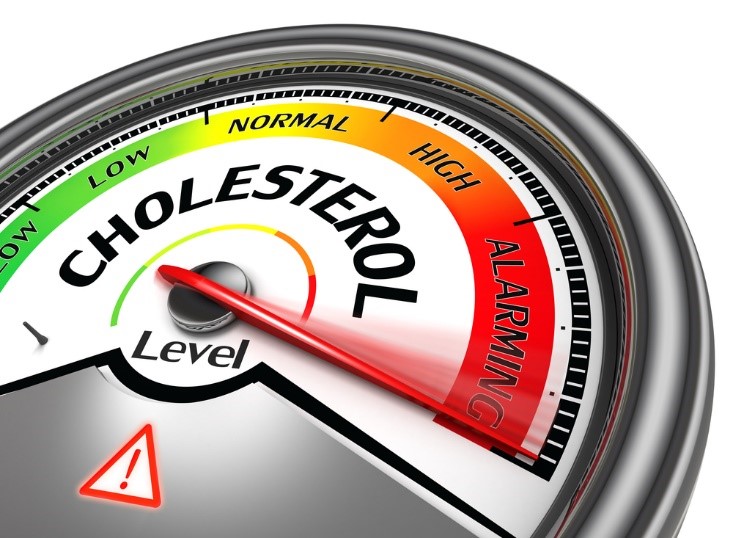Symptoms of High Cholesterol

Cholesterol is essential for forming cell membranes and helps produce hormones like estrogen, testosterone, cortisol, and aldosterone. However, when cholesterol levels increase, it poses serious health risks.
High cholesterol is a severe condition that adversely affects cardiovascular health, increasing the likelihood of heart disease and stroke. Recognizing the symptoms of high cholesterol and understanding the factors contributing to its elevation is essential to preventing its harmful consequences.
What is cholesterol?
Cholesterol is a fat-like substance in the cells that is essential for various functions such as forming cell membranes and producing hormones and vitamin D. Lipoproteins are a type of protein that carries cholesterol in the bloodstream. They have two primary forms:
- Low-Density Lipoprotein (LDL): LDL or bad cholesterol transports HDL cholesterol from the liver to the body’s cells. However, excess LDL cholesterol can accumulate in the arteries, leading to plaque buildup, a significant sign of high cholesterol, and can increase the risk of heart disease or stroke.
- High-Density Lipoprotein (HDL): Good cholesterol or HDL is critical in removing bad cholesterol from the bloodstream and transporting it to the liver for disposal. Higher levels of HDL are considered a positive sign.
What are the causes of high cholesterol?
High cholesterol levels are the result of:
- A food diet rich in saturated fats and cholesterol.
- Lack of physical activity and exercise.
- Obesity and being overweight.
- Smoking and tobacco use.
- Genetic predisposition and family history.
- Age and gender-related factors.
What are the high cholesterol risks for the body?
High cholesterol can lead to various medical conditions dependent on the blood vessels that are affected:
- Coronary Artery Disease (CAD): Atherosclerosis in the coronary arteries, which supply blood to the heart, leads to CAD. Reduced blood flow to the heart causes heart dysfunction, potentially culminating in a heart attack or heart failure.
- Carotid Artery Disease: When atherosclerosis affects the carotid arteries, which carry blood to the brain, it’s called carotid artery disease. Insufficient oxygen-rich blood supply to the brain can lead to transient ischemic attacks (TIAs or “mini-strokes”) or severe strokes.
- Peripheral Artery Disease (PAD): When atherosclerosis affects the arteries in the limbs (legs or arms), it’s known as peripheral artery disease (PAD). PAD often doesn’t produce noticeable symptoms until an artery is blocked, resulting in intermittent claudication—a leg cramp that occurs during movement but eases at rest. PAD can lead to complications in the limbs and other parts of the body due to interconnected blood vessels.
- High Blood Pressure (Hypertension): Cholesterol plaque and calcium deposition cause arteries to become narrow and rigid, forcing the heart to put extra effort into pumping blood. This elevated blood pressure is a significant contributor to heart disease.
What are the symptoms of high cholesterol?
While high cholesterol itself doesn’t have direct symptoms, it can contribute to the development of other conditions like atherosclerosis, which can then lead to high cholesterol symptoms such as:
- Chest Pain: People with high cholesterol may experience chest discomfort or pain, often described as tightness, pressure, or squeezing in the chest. This high cholesterol symptom typically occurs during physical exertion or stress.
- Shortness of Breath: Reduced blood flow due to high cholesterol can cause shortness of breath, typically after physical activity or when lying flat.
- Heart Palpitations: Irregular heartbeats or palpitations can be a symptom of heart disease due to high cholesterol levels.
- Fatigue: People with reduced blood flow to the heart muscle may feel unusually tired, especially after physical activity.
- Dizziness or Fainting: In some cases, reduced blood flow to the brain causes dizziness or fainting.
What are normal cholesterol levels and diagnosis?
The only way to diagnose cholesterol is by getting a lipid panel test, which can help indicate hyperlipidemia symptoms or high blood lipid levels, a medical condition characterised by elevated bloodstream lipids (fats) levels.
Below is the normal cholesterol range:
| Age | Total Cholesterol (mg/dL) | Non-HDL Cholesterol (mg/dL) | HDL Cholesterol (mg/dL) | LDL Cholesterol (mg/dL) |
| Under 19 | Below 170 | Below 120 | Below 110 | Above 45 |
| Males above 20 | 125-200 | Below 130 | Below 100 | 40 or above |
| Females above 20 | 125-200 | Below 130 | Below 100 | 50 or above |
Here’s everything to know about the lipid profile test:
- Total Cholesterol: This figure represents the overall amount of cholesterol circulating in the bloodstream.
- HDL Level (High-Density Lipoprotein): HDL transfers excess cholesterol from the blood to the liver for removal.
- LDL Level (Low-Density Lipoprotein): While the body needs some LDL to transport cholesterol to its cells, excess LDL can lead to health problems.
- VLDL Level (Very Low-Density Lipoprotein): VLDL, another form of bad cholesterol, also contributes to plaque formation. VLDL primarily carries triglycerides in the bloodstream.
- Triglycerides: Triglycerides are a kind of fat in the blood. Some triglycerides are necessary, but high levels can increase the risk of conditions like atherosclerosis.
- Non-HDL Cholesterol: This value represents all the cholesterol in the blood that isn’t HDL.
- Ratio Between Total Cholesterol and HDL: The ratio between Total Cholesterol and HDL is calculated by dividing total cholesterol by HDL.
Understanding the symptoms and signs of high cholesterol is crucial to effectively managing and preventing associated health conditions. In case of any symptoms, consult your doctor and take a lipid profile test to address related health issues in time.













